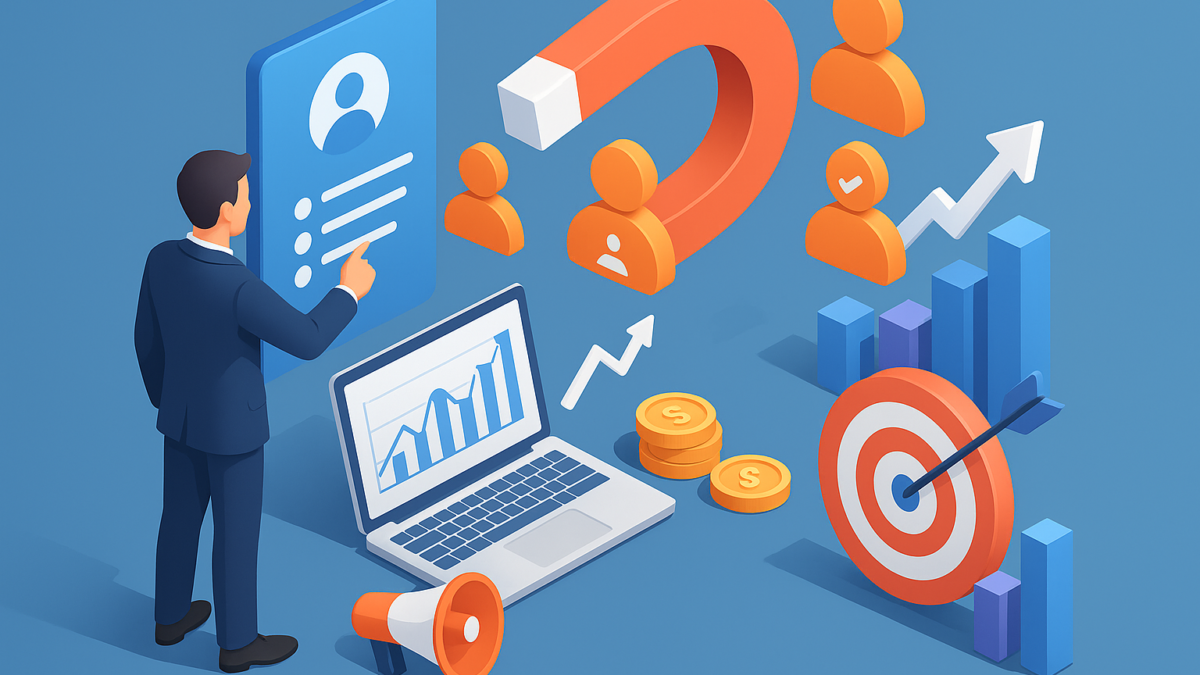Lead Generation in 2025: Strategies to Attract and Convert High-Quality B2B Leads
In B2B marketing, lead generation is the lifeblood of sales growth. Without a steady stream of high-quality leads, even the most innovative products and services struggle to reach their target audience. But in 2025, traditional lead generation tactics alone aren’t enough. Businesses need data-driven, multi-channel strategies to attract, engage, and convert the right prospects.
The challenge isn’t just generating leads it’s generating qualified leads that are ready to engage and convert.
Understanding Lead Generation
Lead generation is the process of attracting potential customers (leads) and nurturing them until they are ready to make a purchase. In B2B contexts, this often involves:
- Capturing contact information via forms, landing pages, or gated content.
- Nurturing leads with personalized content and targeted campaigns.
- Scoring leads based on engagement, behavior, and fit for your solution.
Modern lead generation combines technology, analytics, and content strategies to create predictable pipelines that drive revenue.
Top Lead Generation Strategies for 2025
- Content Syndication for Targeted Reach
- Distribute blogs, whitepapers, and case studies across relevant channels to reach niche audiences.
- Focus on quality over quantity—target prospects likely to convert rather than chasing broad exposure.
- Example: Use a B2B syndication platform to get your content in front of decision-makers.
- AI-Powered Predictive Lead Scoring
- Machine learning models analyze past interactions, engagement, and firmographics to predict which leads are most likely to convert.
- Helps sales teams prioritize efforts on high-value prospects.
- Multi-Channel Lead Nurturing
- Combine email marketing, LinkedIn outreach, webinars, and retargeting campaigns.
- Ensure consistent, personalized messaging across channels.
- Interactive Content for Engagement
- Quizzes, calculators, and ROI estimators encourage prospects to engage actively.
- Collect valuable data to segment and personalize follow-ups.
- Account-Based Marketing (ABM)
- Target high-value accounts with tailored campaigns, personalized content, and direct outreach.
- Align sales and marketing teams for higher conversion rates.
- Referral and Partner Programs
- Encourage existing customers and partners to refer new leads.
- Incentivize quality referrals for sustained pipeline growth.
Measuring Lead Generation Success
To ensure your strategies are effective, track these key metrics:
- Conversion Rate: Percentage of leads that take the desired action.
- Cost per Lead (CPL): Investment required to generate a lead.
- Lead Quality Score: Engagement, fit, and purchase intent of each lead.
- Pipeline Velocity: Time taken for leads to move through the sales funnel.
- ROI: Revenue generated from lead generation campaigns versus cost.
Tracking these metrics ensures that lead generation campaigns are not just generating leads, but generating revenue.
Common Mistakes to Avoid
- Focusing on volume over quality, resulting in unqualified leads.
- Ignoring multi-channel engagement and relying on a single touchpoint.
- Lack of personalization, which reduces conversion rates.
- Failing to analyze and optimize campaigns based on real data.
Avoiding these mistakes ensures your lead generation efforts are efficient, effective, and scalable.
Conclusion: Lead Generation as a Growth Engine
Lead generation in 2025 is more than collecting contacts—it’s about creating meaningful engagement, targeting the right prospects, and nurturing them to conversion. By leveraging AI, multi-channel strategies, and data-driven insights, businesses can build a predictable pipeline that drives revenue and growth.
Generate High-Quality Leads Today .Get Started Now!





